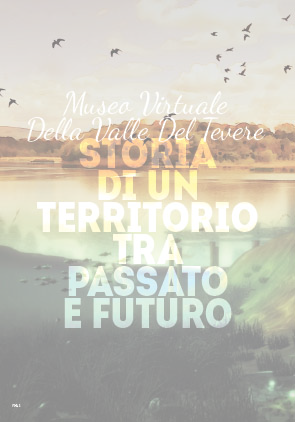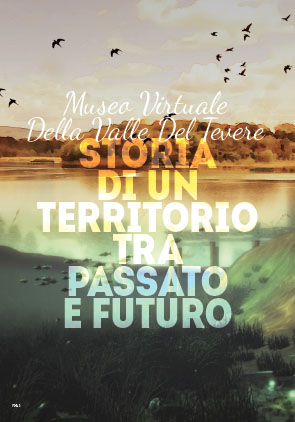The MuViVaTe project, and in particular the virtual reality installation currently on display at Villa Giulia, was presented at:
- September-December 2014, Festival of Travel Literature, at the Italian Geographic Society in Villa Celimontana, in Rome
- April 2015 Rai Storia, 15-minutes documentary, broadcast in the program “I Mestieri della Cultura”.
April 2015, Laval Virtual - ReVolution, prestigious international exhibit about the most innovative technologies for electronic visualization, in Laval, France, for a week.
http://www.laval-virtual.org/l-essentiel/laval-virtual-precedent/les-exposants-2014/186-virtual-museum-of-the-tiber-valley.html - October 2015, Digital Heritage Expo, international exhibit at Granada Science Park, for a week.
http://www.digitalheritage2015.org/digital-heritage-expo-program/ - The Interculture Forum association organizes guided tours to MuViVaTe at Villa Giulia, twice a month, addressed to various user targets.
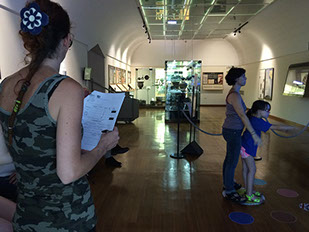 In the summer of 2015, the audience evaluation has been planned on the main virtual reality installation of Villa Giulia, so to investigate its attractiveness, usability and educational potential. The results of the survey, conducted on a sample of 117 generic visitors, have been analyzed, interpreted, and discussed in a final report (See the Download section).
In the summer of 2015, the audience evaluation has been planned on the main virtual reality installation of Villa Giulia, so to investigate its attractiveness, usability and educational potential. The results of the survey, conducted on a sample of 117 generic visitors, have been analyzed, interpreted, and discussed in a final report (See the Download section).
Since autumn 2015, educational workshops and visits with various high schools in Rome and province (about 150-200 students) are organized, with the purpose of studying specific issues of the project. These activities have led to a re-assessment of the "user experience" evaluation on a more defined target group: students of 12-18 years old.
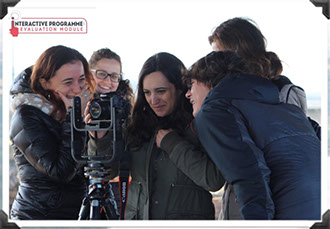 In order to better address the educational workshops and evaluation of user experience with roman schools, the CNR ITABC has organized a training course "Interactive Programme: Evaluation in Digital Cultural Heritage" (January-April 2016), where MuViVaTe project has been treated as the case study. The participants, with consistent academic background, have been formed so to profile, together with the ITABC staff, the work of analysis and interpretation of data emerging from the survey on high school students. See the report in the download section.
In order to better address the educational workshops and evaluation of user experience with roman schools, the CNR ITABC has organized a training course "Interactive Programme: Evaluation in Digital Cultural Heritage" (January-April 2016), where MuViVaTe project has been treated as the case study. The participants, with consistent academic background, have been formed so to profile, together with the ITABC staff, the work of analysis and interpretation of data emerging from the survey on high school students. See the report in the download section.
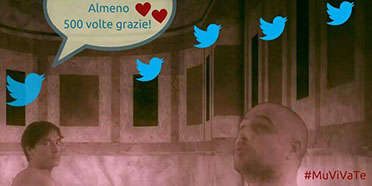 Workshops on MuViVaTe’s main themes for different target groups are regularly organized at the headquarters of the Italian Geographic Society and other museums, since March 2016. See documentation in the download section.
Workshops on MuViVaTe’s main themes for different target groups are regularly organized at the headquarters of the Italian Geographic Society and other museums, since March 2016. See documentation in the download section.
The MuViVaTe project is presented in various international conferences; it is currently the subject of a dozen of scientific publications.
Promotion
User Experience
Education
Workshop & Social media
Download Area
Promotional brochure
Education
Workshops
BROCHURE
of the project
WHERE YOU
CAN FIND US
GUIDE
TO MOVIES
Magazine
download
WORKSHOP
MUSEALISING THE LANDSCAPE
MuViVate
presentations
5-5-2016
Società Geografica Italiana
WORKSHOP
COMMUNICATION DESIGN
MuViVate
presentations
10-5-2016
Società Geografica Italiana
Valutazione del feedback del pubblico
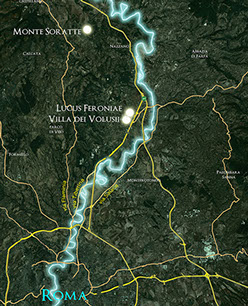 The Virtual Museum of the Tiber Valley (MuViVaTe), developed by CNR ITABC and financed by Arcus SpA (now Ales SpA), is an integrated system of knowledge, promotion and communication of the cultural landscape of the Tiber river’s middle valley, in the area north of Rome, between the Mount Soratte and Fidene, and between Sacrofano and Palombara Sabina (about 60 x 40 km). Main goals are research, cultural dissemination, and promotion of the territory. From the collection of existing data, from digital documentation and topographic survey, the landscape of the middle Tiber valley has been reconstructed in 3D, in its geological and anthropogenic evolution through various chronological phases (from 3 million years ago till the present), together with some archaeological sites (Lucus Feroniae, Volusii’s Villa) and contexts of historical and natural interest(Soratte Mountain and the Tevere-Farfa Natural Reserve).
The Virtual Museum of the Tiber Valley (MuViVaTe), developed by CNR ITABC and financed by Arcus SpA (now Ales SpA), is an integrated system of knowledge, promotion and communication of the cultural landscape of the Tiber river’s middle valley, in the area north of Rome, between the Mount Soratte and Fidene, and between Sacrofano and Palombara Sabina (about 60 x 40 km). Main goals are research, cultural dissemination, and promotion of the territory. From the collection of existing data, from digital documentation and topographic survey, the landscape of the middle Tiber valley has been reconstructed in 3D, in its geological and anthropogenic evolution through various chronological phases (from 3 million years ago till the present), together with some archaeological sites (Lucus Feroniae, Volusii’s Villa) and contexts of historical and natural interest(Soratte Mountain and the Tevere-Farfa Natural Reserve).
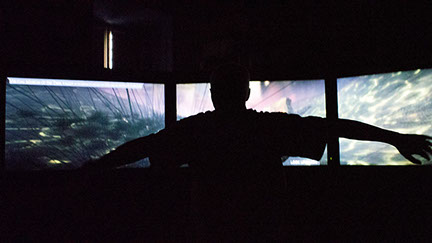 The narrative, the evocation and interaction involve the visitor in an emotional and multi-sensory experience, thanks to a convergence of science, technology and art.
The narrative, the evocation and interaction involve the visitor in an emotional and multi-sensory experience, thanks to a convergence of science, technology and art.
The authors’ hope is to be able to push the public's interest towards visiting the actual sites in the middle Tiber valley and raise its affection towards this extraordinary common cultural heritage.
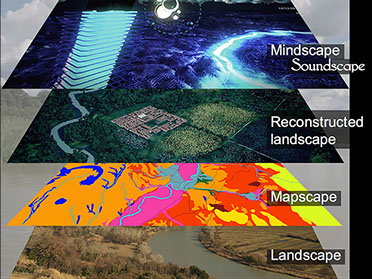 The Tiber river is told from various points of view: the geo-morphological context, the ecosystem, the settlement and human activities over the centuries, the mythology linked to the river, the rituals and iconography, the archaeological, literary and natural landscape. The story is told thanks to the testimony of writers and poets of ancient and modern times, through the vision of citizens who now live in this area and, finally, through the story of fictional characters but historically plausible, who act in the reconstructed environment faithful to the real historical context.
The Tiber river is told from various points of view: the geo-morphological context, the ecosystem, the settlement and human activities over the centuries, the mythology linked to the river, the rituals and iconography, the archaeological, literary and natural landscape. The story is told thanks to the testimony of writers and poets of ancient and modern times, through the vision of citizens who now live in this area and, finally, through the story of fictional characters but historically plausible, who act in the reconstructed environment faithful to the real historical context.
 The Tiber river has been told through the continuous alternation of:
The Tiber river has been told through the continuous alternation of:
1) the holistic vision, which allows users to understand evolutionary processes, settlement patterns and land usage in the different historical periods;
2) the monographic vision, that allows users to understand the symbolic, religious, mythical values, the memory and the individual and collective feeling of social groups living in specific eras. The narrative and the evocative atmosphere, more than cold descriptions, are the characteristic features of this project.
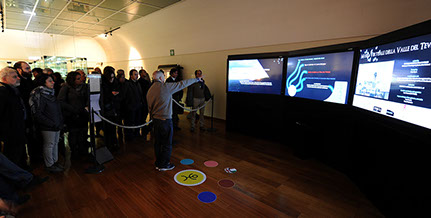 Several multimedia applications have been developed in oder to be placed permanently in museums in Rome and in its periphery:
Several multimedia applications have been developed in oder to be placed permanently in museums in Rome and in its periphery:
-The River Museum, in Nazzano;
-The archaeological museum of Lucus Feroniae, in Capena;
-The Italian Geographical Society Library at Villa Celimontana, in Rome;
- The National Etruscan Museum of Villa Giulia, in Rome. For the latter it has been created a large virtual reality installation working with natural interaction, conceived as an attractive pole to convey the public interest towards such themes. It has been previewed at Villa Celimontana in Rome at the International Travel Literature Festival in 2014.
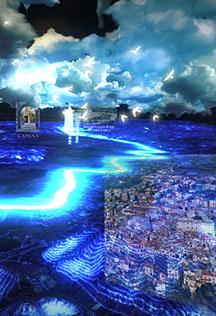 Designed, coordinated and implemented by:
Designed, coordinated and implemented by:
CNR ITABC
Financed by:
ARCUS SpA (now ALES SpA)
With the support of:
Direzione Regionale per i Beni Culturali e Paesaggistici del Lazio;
Soprintendenza per i Beni Archeologici dell’Etruria Meridionale, Società Geografica Italiana, Museo del Fiume di Nazzano, Forum Interculture.
In collaboration with:
E.V.O.CA. srl, Franz Fischnaller, Digiter srl, KatatexiLux
Goals and area of interest
Multi-sensorial immersion
The diverse "gazes"
Landscape and sites
Installations
MuViVaTe authors




